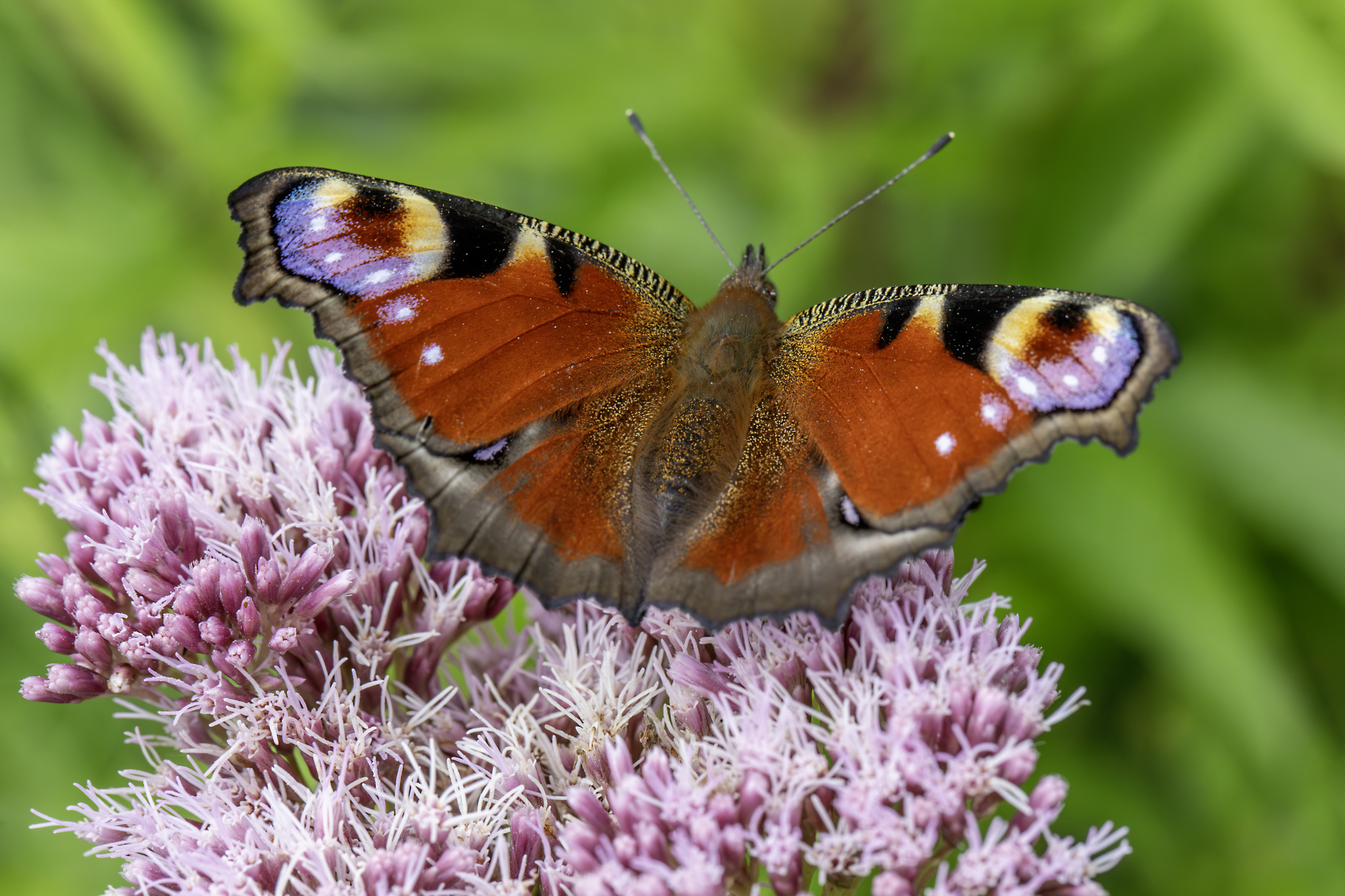The European Peacock (Aglais io), commonly known simply as the Peacock butterfly, is one of the most recognizable and beautiful butterflies in Europe. Here’s a detailed overview:
Description
- Wingspan:
- The European Peacock butterfly has a wingspan of about 50 to 55 millimeters (2.0 to 2.2 inches).
- Appearance:
- The upper side of its wings is a striking combination of colors, featuring large, eye-catching eyespots. The forewings are reddish-brown with a prominent eyespot that has a blue, yellow, and black pattern, resembling the eyes of a peacock, which is how the butterfly got its name.
- The hindwings are darker, also with an eyespot, though slightly less elaborate than those on the forewings.
- The underside of the wings is a dark, mottled brown, providing excellent camouflage when the butterfly is at rest with its wings closed, making it resemble a dead leaf or tree bark.
Habitat and Range
- Range:
- The European Peacock is widespread throughout Europe and into temperate parts of Asia, including regions of Japan. It is found from the British Isles in the west to Japan in the east, and as far north as Scandinavia and south into the Mediterranean region.
- Habitat:
- This butterfly is highly adaptable and can be found in a variety of habitats, including woodlands, gardens, meadows, parks, and farmland. It is often seen in rural and urban areas, making it a familiar sight to many.
Behavior and Diet
- Diet:
- The adult European Peacock feeds on nectar from a variety of flowering plants, such as buddleia, dandelions, and thistles. They are also known to feed on tree sap and fallen fruits.
- The caterpillars (larvae) primarily feed on stinging nettles (Urtica dioica), which is their main host plant.
- Behavior:
- The Peacock butterfly is known for its territorial behavior, particularly the males, which often bask in sunny spots and chase away intruders.
- When threatened, the butterfly will flash its wings to display the eyespots, which can startle or deter predators such as birds.
- It is one of the first butterflies to be seen in spring, as it hibernates during the winter in sheltered places like tree hollows, sheds, or even houses. It can sometimes be seen flying on warm winter days if disturbed from hibernation.
Reproduction
- Breeding Season:
- The European Peacock typically has two broods per year. The first brood appears in late spring to early summer, and the second in late summer.
- Eggs and Larvae:
- Females lay clusters of eggs on the undersides of nettle leaves. The eggs hatch into black, spiny caterpillars, which feed communally on the host plant.
- As they grow, the caterpillars become more solitary before eventually pupating.
Conservation Status
- Population:
- The European Peacock is not considered threatened and is quite common across its range. However, like many butterflies, it can be sensitive to changes in its environment, particularly the loss of suitable habitat and host plants.
- Threats:
- The main threats include habitat destruction, agricultural practices that reduce the availability of nettles, and climate change, which could affect the butterfly’s lifecycle and distribution.
Summary
The European Peacock (Aglais io) is a stunning and familiar butterfly across Europe and parts of Asia. Known for its vivid eyespots and adaptability to various environments, it is a favorite among butterfly enthusiasts and gardeners alike. While currently widespread and common, the conservation of its habitats and host plants is essential to ensure its continued presence in the future.
Visited 277 times, 5 visit(s) today
Views: 515
Subscribe to the newsletter:
